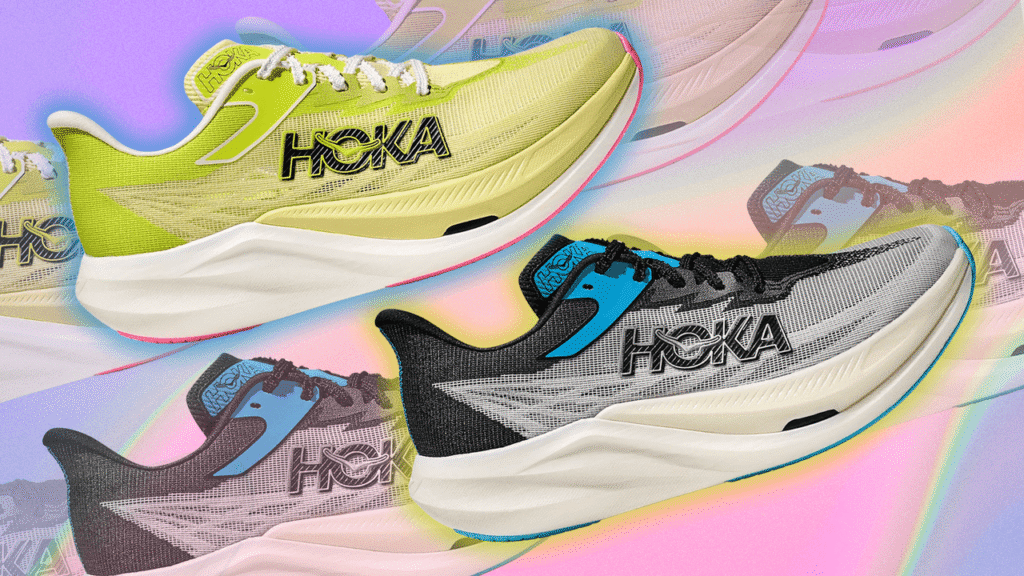If you haven’t heard of “supershoes,” here’s the quick rundown: they’re race-day running shoes built with a stiff carbon fiber plate in the midsole that helps propel you forward and conserve energy over long distances. Studies show that they really do make runners faster, sometimes by several percentage points. But the problem is that most of these shoes get a reputation for being unstable. They’re designed for elite athletes who already run with impeccable form and don’t need to worry about rolling ankles at mile 22 of a marathon. For recreational runners, or anyone who isn’t logging seven-minute miles, the payoff often comes with the tradeoff of feeling wobbly and insecure.
The Hoka X 3 has pretty much upended this notion. This shoe was built with more stability than many of its supershoe peers, making it a potential entry point for everyday runners who want to experience that carbon-plate “pop” without sacrificing stability (and thus, confidence) in their stride.
In This Guide
Speed Run
If you’re not accustomed to a carbon fiber plate in your shoes, it feels like a bit of an adjustment. I trained for a recent marathon in non-supershoes (my Adidas Evo SLs), so the stiff plate and energetic foam were a noticeable adjustment, especially for my problematic calves. My first test run was an interval workout: 1.5 miles of warm-up at an 11:30 pace, then several rounds of faster efforts. During the warm-up, the shoe felt unforgiving. This isn’t a model that shines at slow paces. But once I picked it up for my 9:10-ish intervals, I felt outright speedy (a rare feeling for me). I glanced down to find myself running 8:45 pace with the same effort. The faster I went, the more responsive and fun the shoe became. But that’s really the thing with supershoes: they’re designed for speed, not easy runs or slower paces.
Compared to other race-day models I’ve tried, the Rocket X 3 feels a tad heavier and slightly less bouncy, but the tradeoff is noticeable stability. I never felt like my ankle was going to roll when rounding a corner or pushing the pace.
Primed For Both Fit and Comfort
First thing: This shoe runs narrow. I have a wide forefoot, and although the shoe has broken in more with each run, it’s still not an ideal fit for me for long distances. (I’ll keep it under a half marathon.)
Other than that, it is a pretty comfortable supershoe. The upper is made from a single-layer knit mesh that hugs the foot without feeling plasticky or restrictive. It breathes well and molds around the midfoot securely. The tongue is strange, with a slight winged shape that comes up more on the outer edges. It’s not gusseted, which I found to be a benefit, as it made them much easier to slide on and off. The laces are serrated, so they held firmly after I cinched them down.


